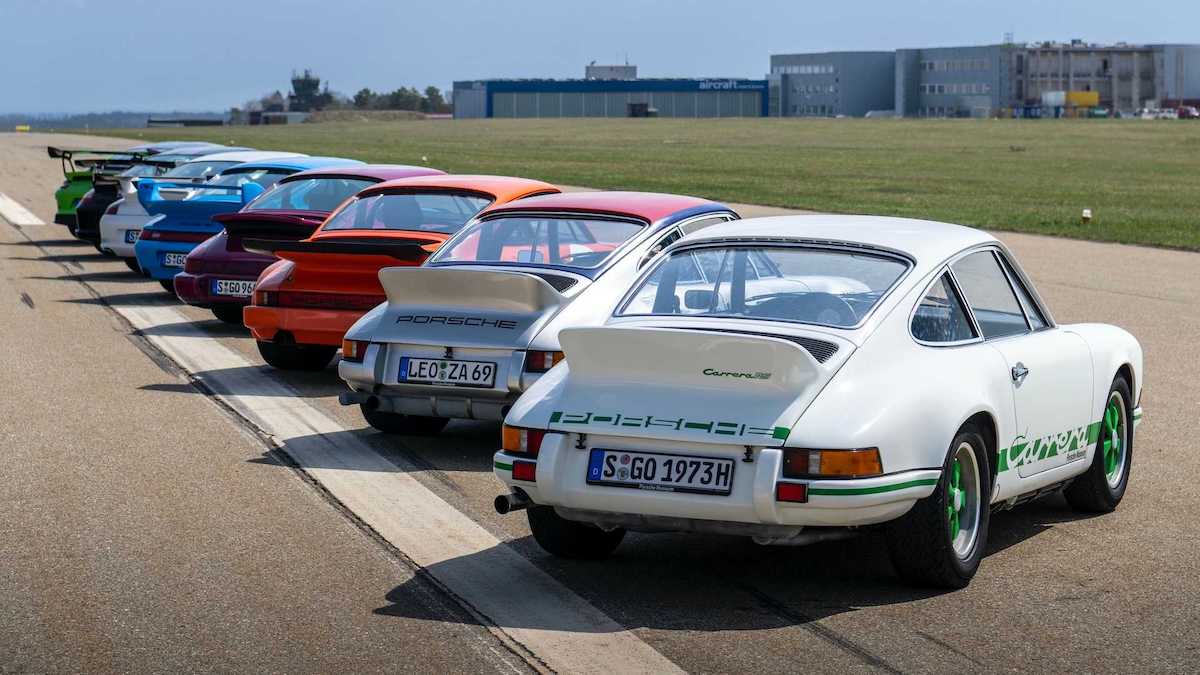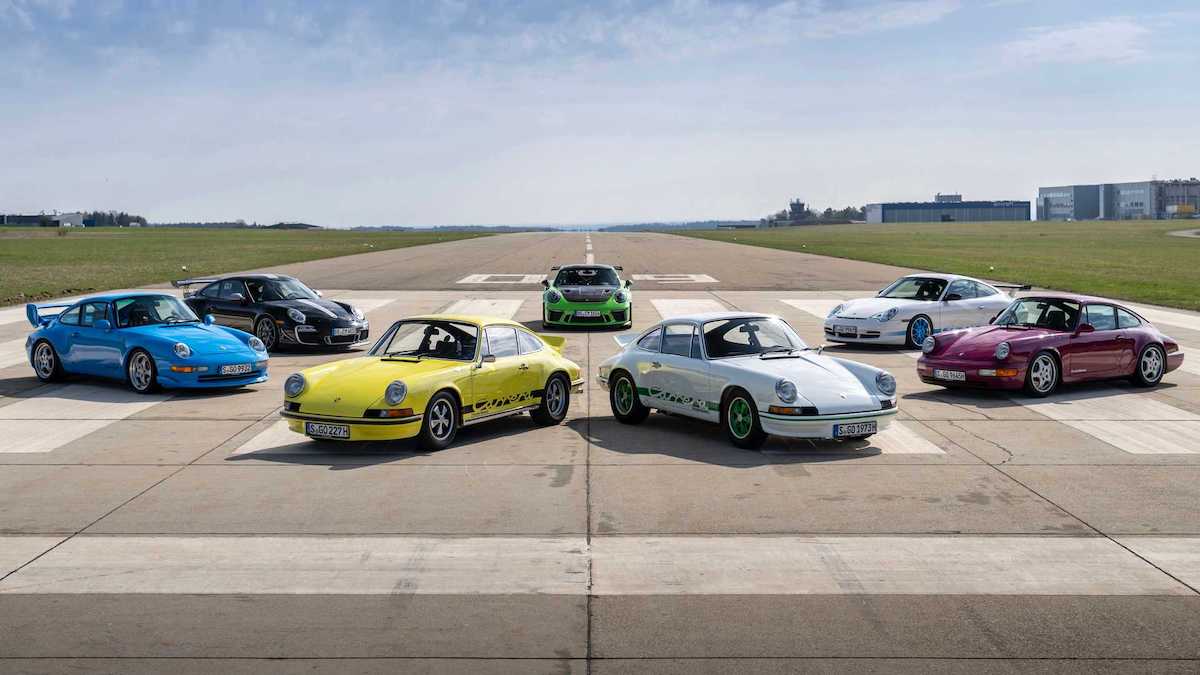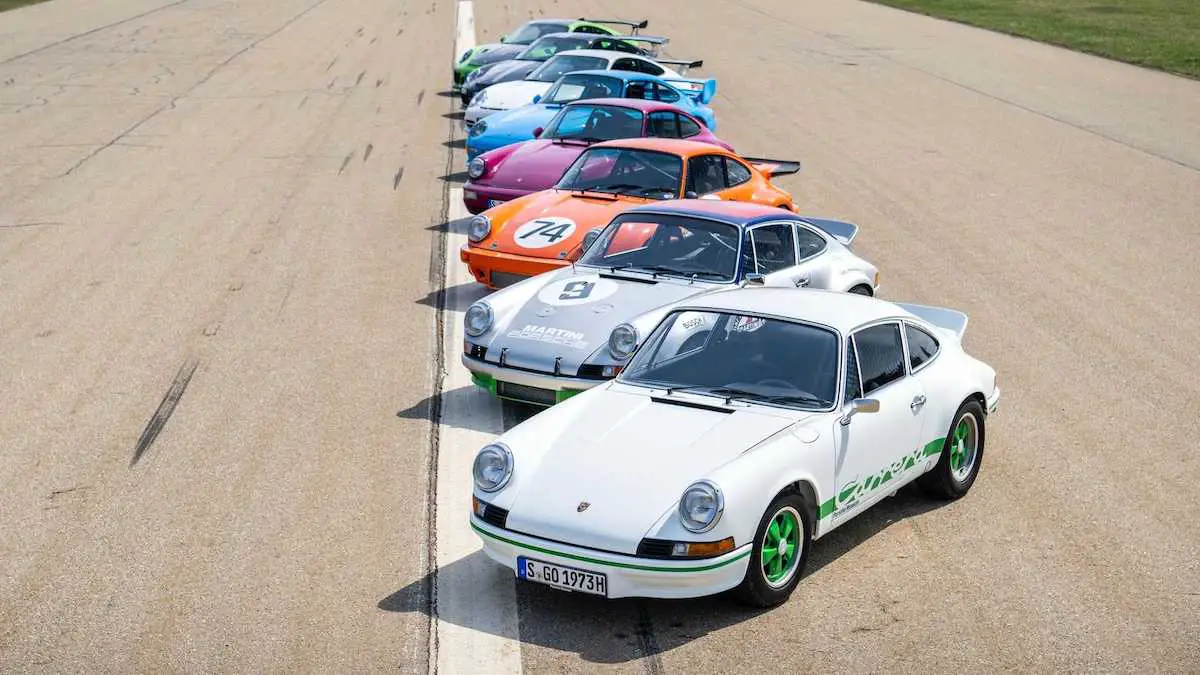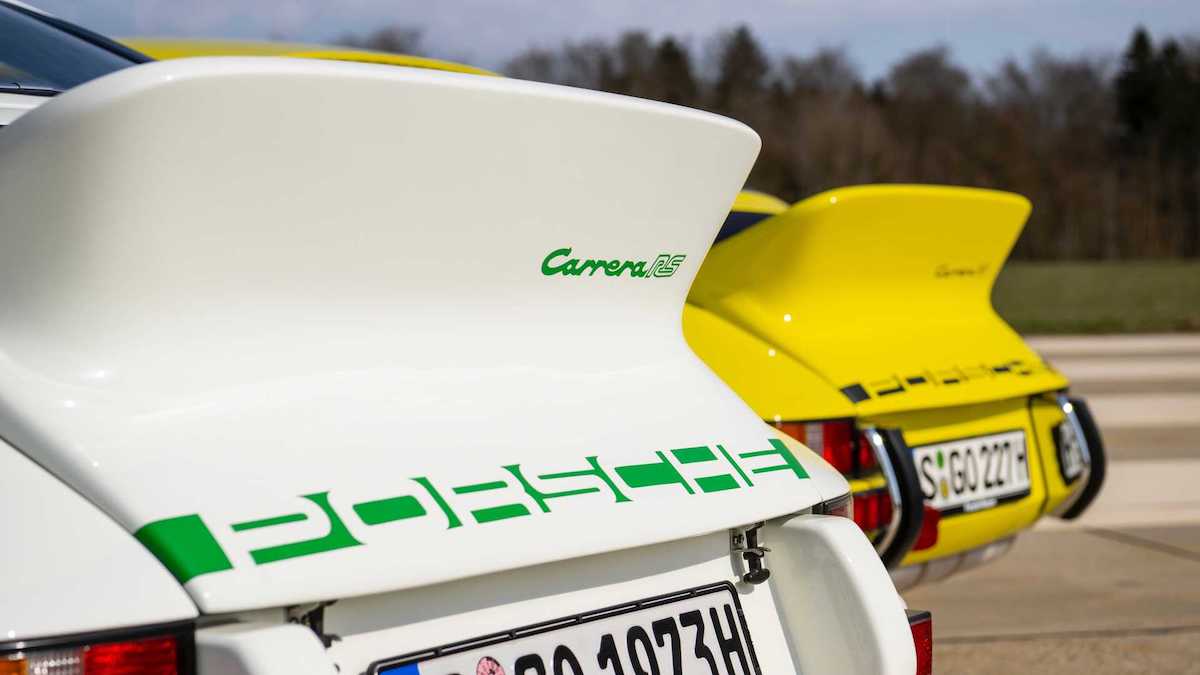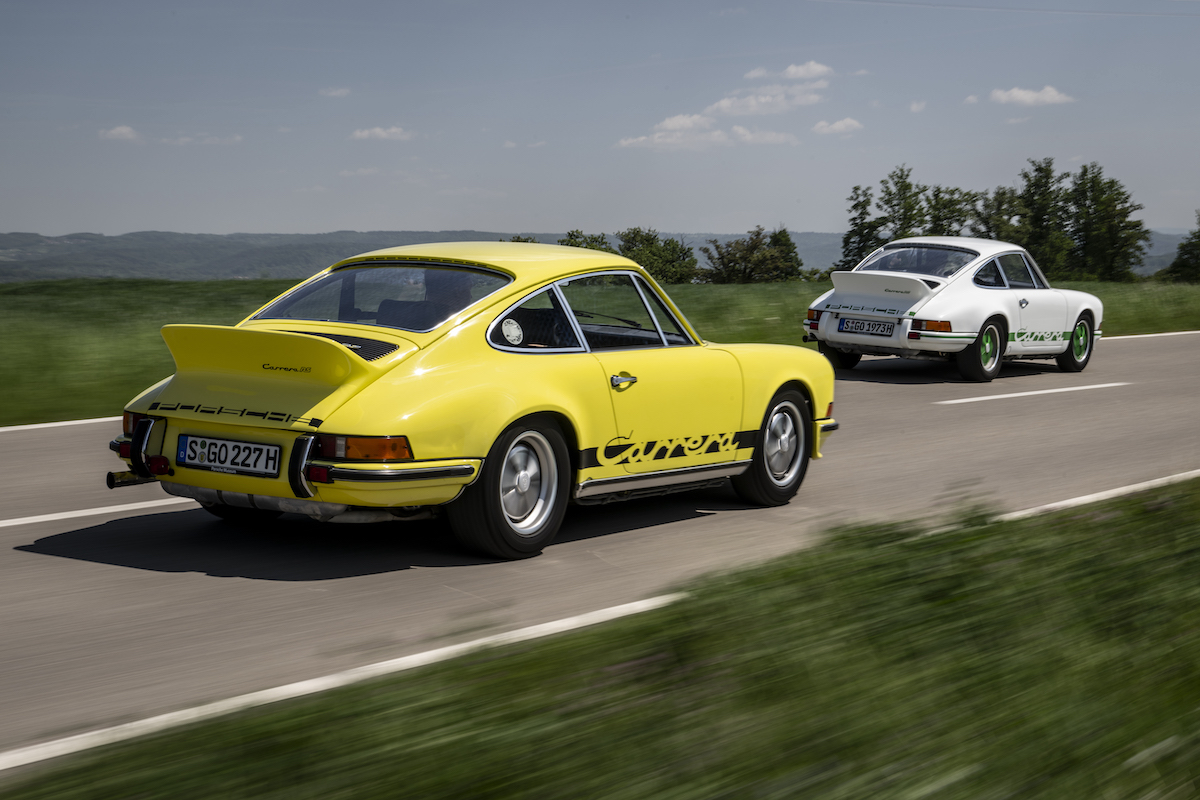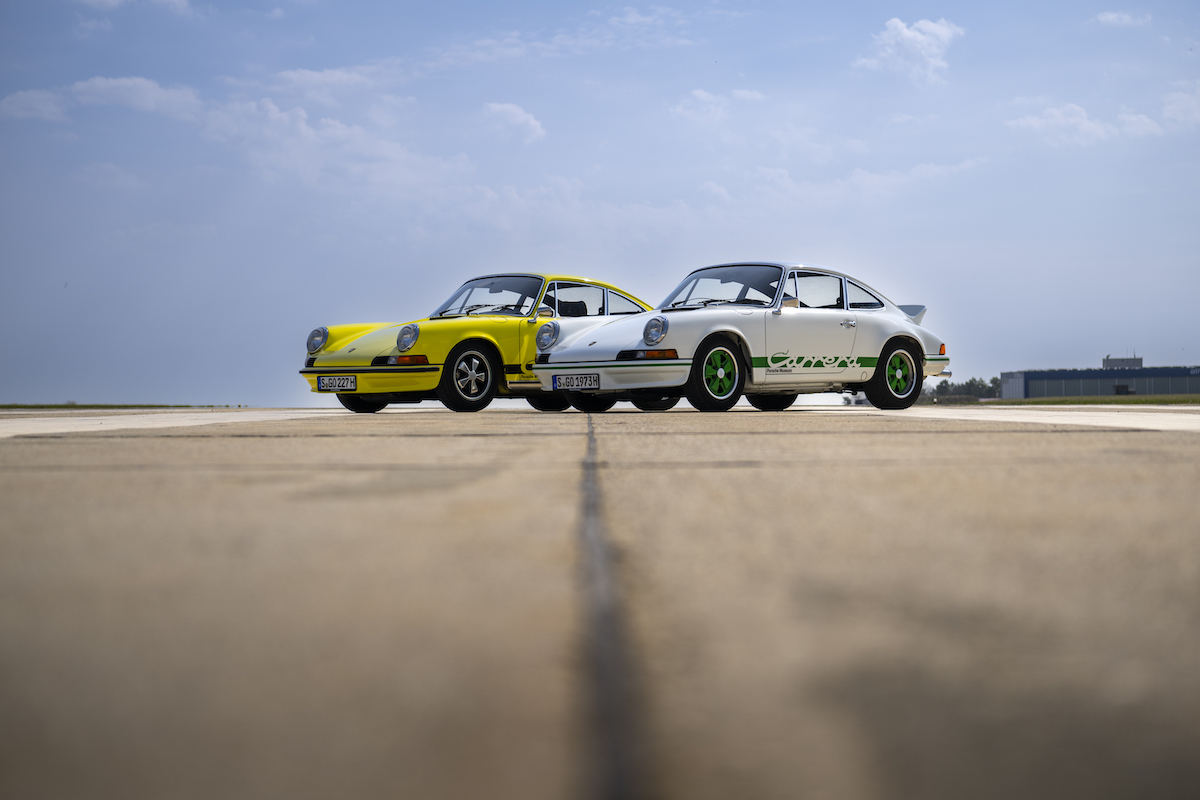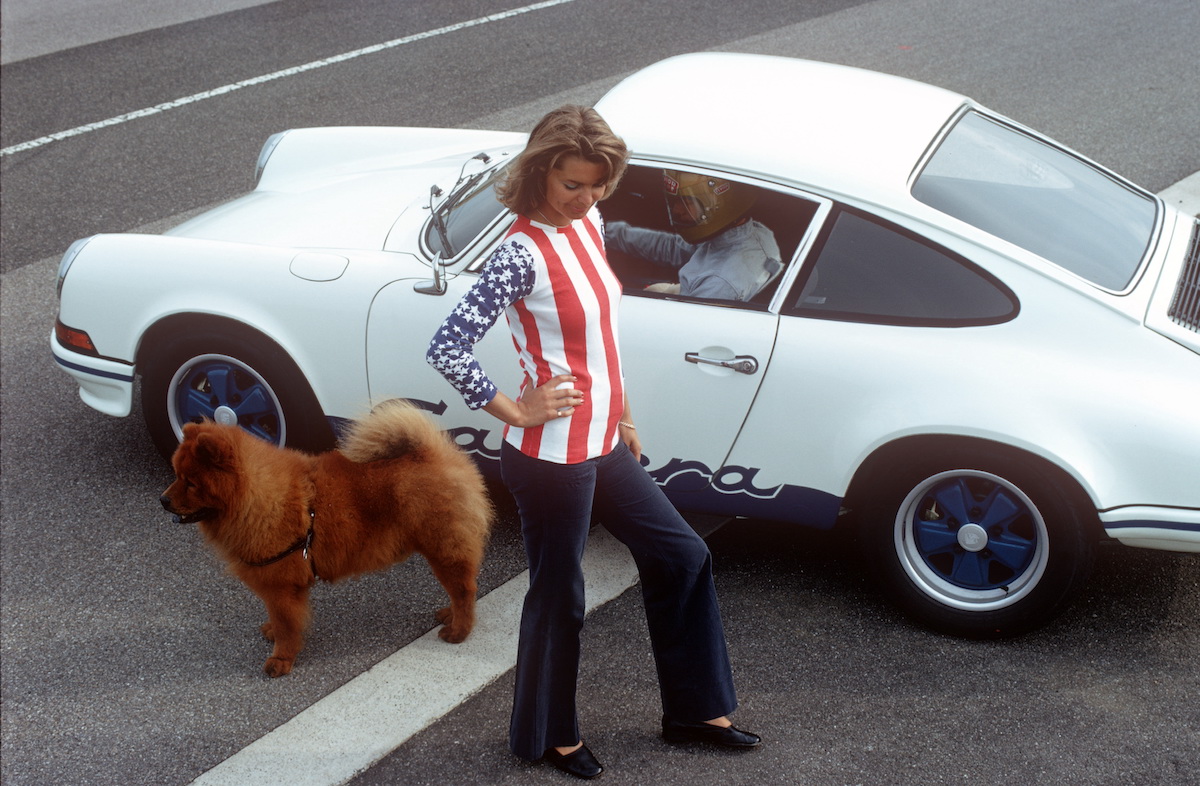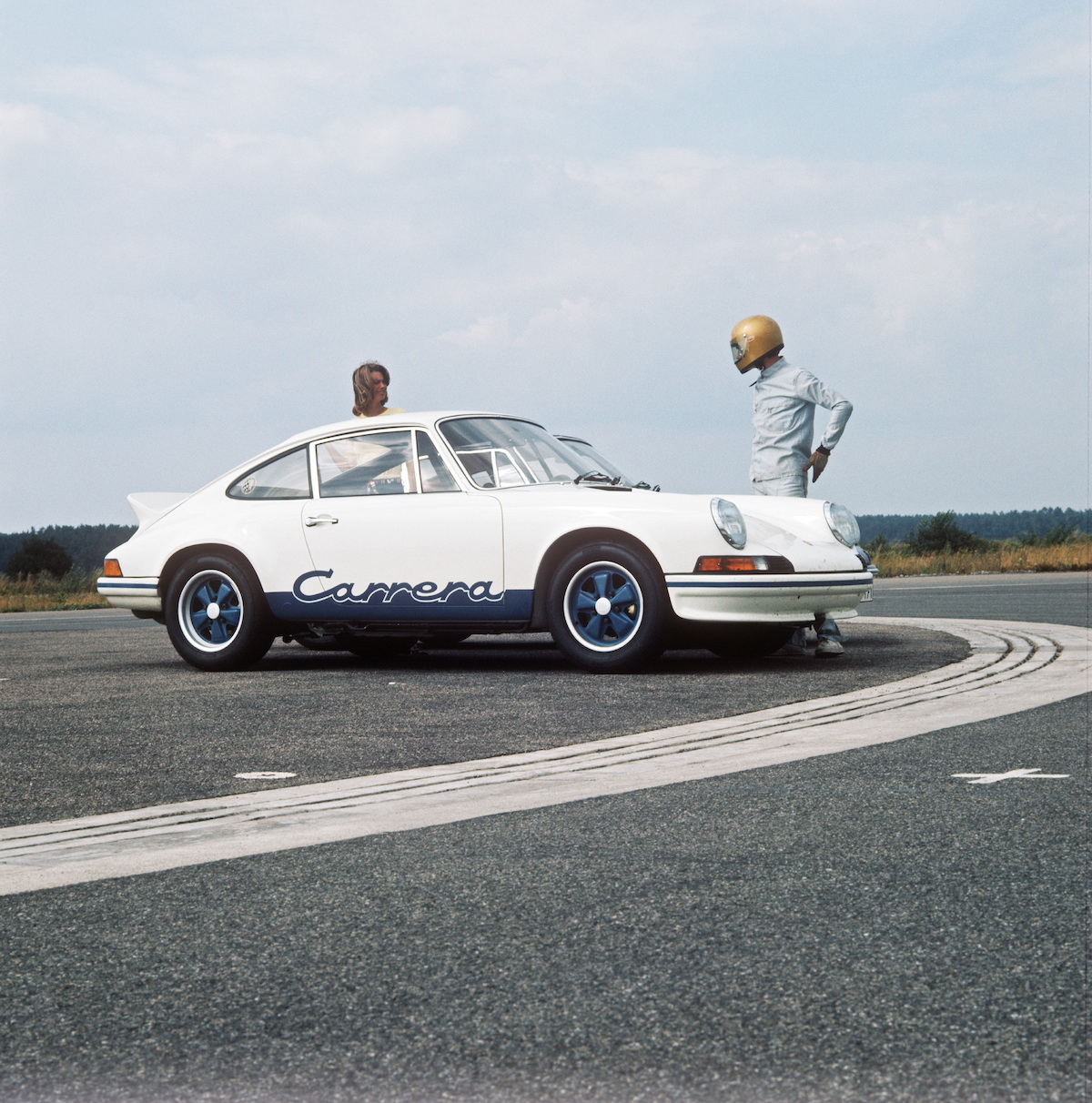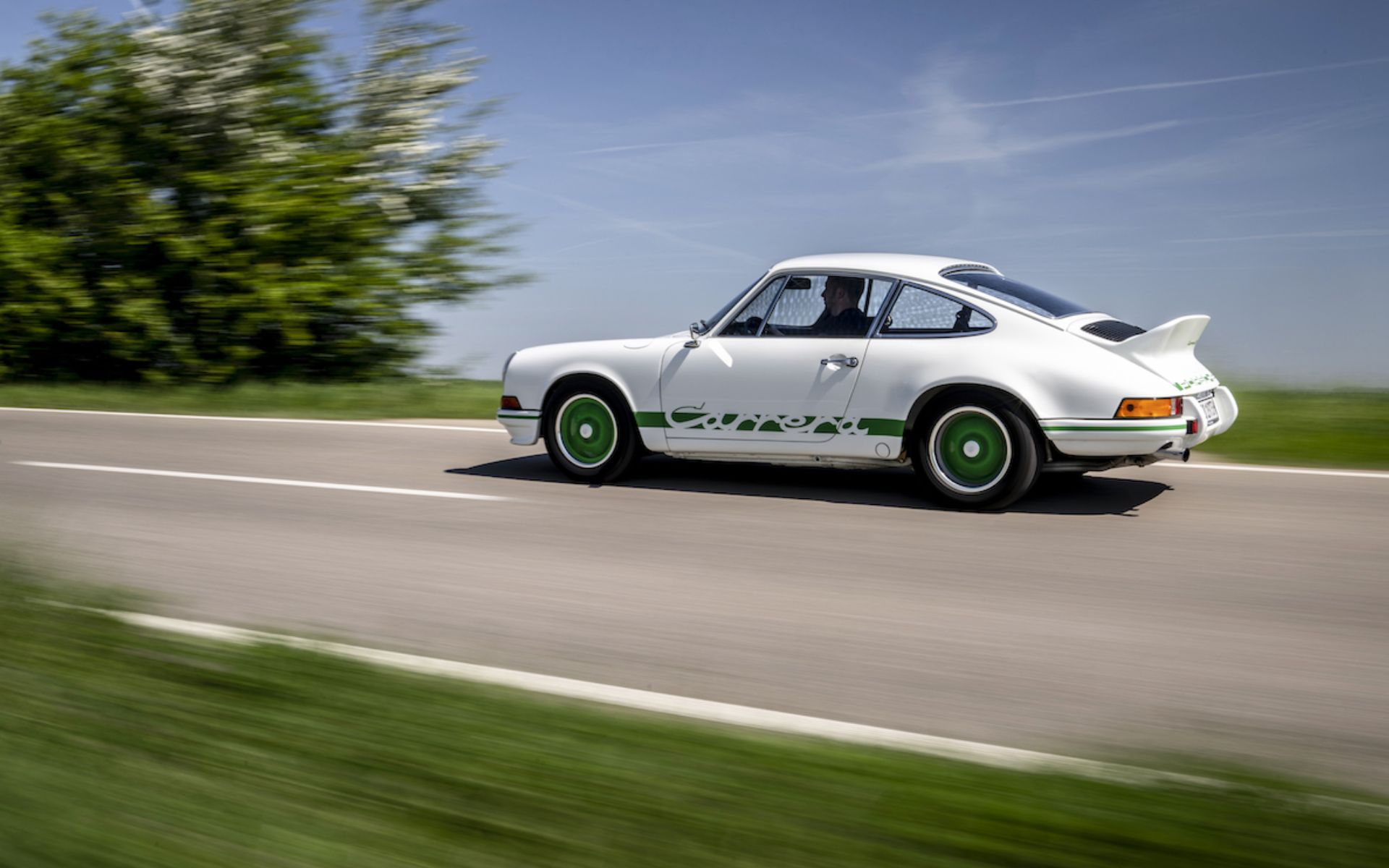Hip-hip! Porsche 911 Carrera 2.7 RS blows out 50 candles – video
We are writing 1972. In that year, Porsche began development of the “Duck Tail,” “RS” or “2.7,” or the later nicknames of the 911 Carrera RS 2.7. It was introduced at the Paris Motor Show the same year. Subiet was the fastest German production car of its time and also the first mass-produced car equipped with front and rear spoilers. Noting the subtly integrated rear wing, it goes without saying where the illustrious 911 Carrera RS 2.7 gets its nickname of “Duck’s Ass. And the RS boasted even more firsts. Similarly, it was the first Porsche to bear the name Carrera – the Spanish word for “race.
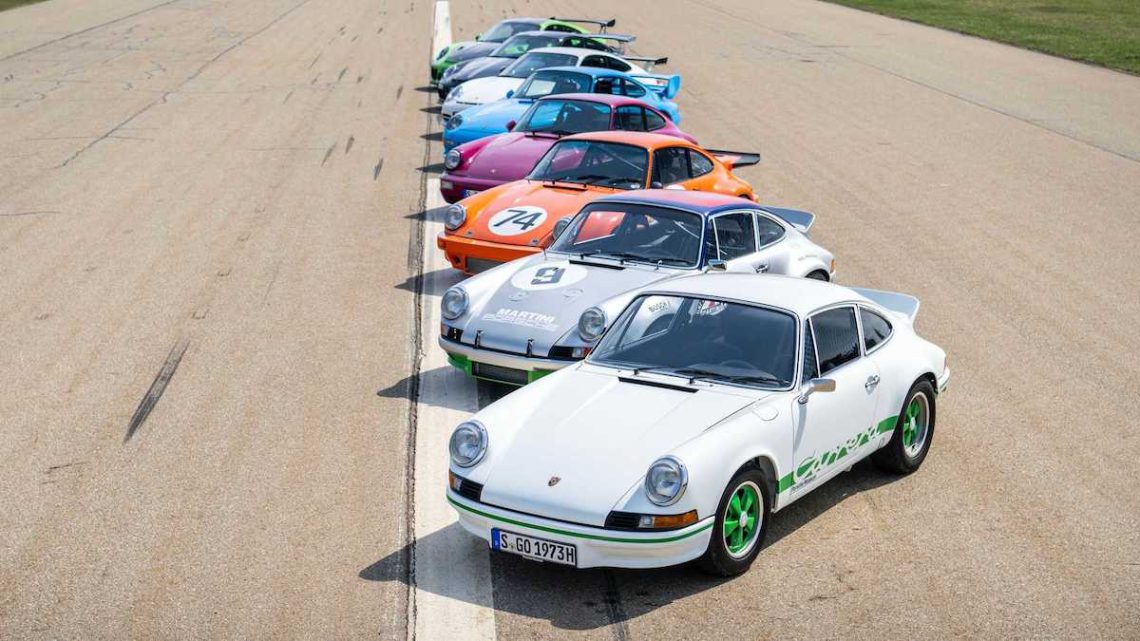
Successful beyond expectations
The 911 Carrera RS 2.7 was intended to be a homologation special. From the first pencil mark, the über-911 was to be a very light, fast sports car. Although the model variant was based on the F model of the 911, its many technical innovations eventually made it the ultimate starting point for Porsche’s race and rally cars. And so it did, with unprecedented success.
The initial print run of up to 500 copies was sold out within just a few months. Porsche was somewhat surprised by the success, but immediately built on and had tripled sales by July 1973. Porsche built a total of 1,580 examples, two hundred of which were equipped with the optional equipment package M471, the Lightweight version. In addition, 55 copies of the racing version, 17 base vehicles and 1,308 touring versions (M472) were manufactured. Once the thousandth 911 RS was manufactured, the Porsche 911 Carrera RS 2.7 was homologated for Group 3 and Group 4.
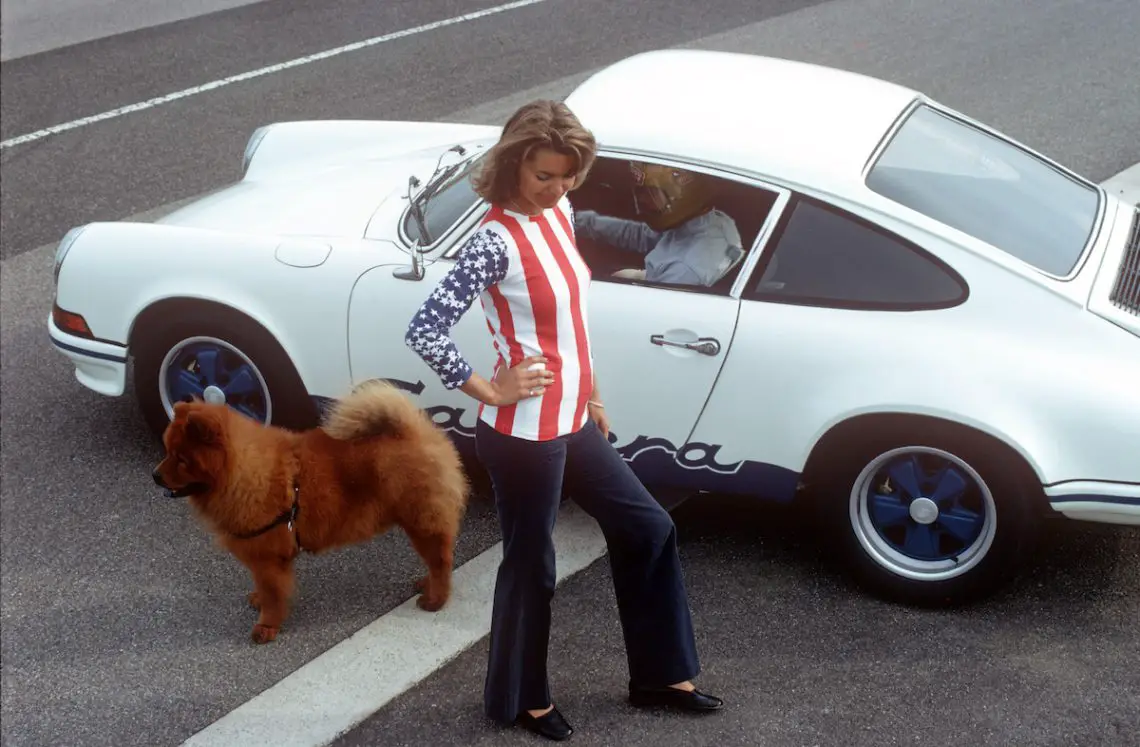
Less is more
Weight, or rather the lack thereof, played a crucial role with the RS, especially the exclusive Lightweight version. The interior was stripped where possible to customer specifications and production date. Among other things, the rear seats, carpet, clock, hanging hooks for your racing jacket and armrests were omitted. At the customer’s request, two lightweight sports seats replaced the heavier standard ones. Even the Porsche emblem on the hood was initially a sticker. Compared to the “Touring,” the “Sport” weighed as much as 115 kilograms less, with an empty weight of 960 kilograms. Still, the Lightweight version cost more than the “regular” RS, at 34,000 German marks at the time. The optional Sport package had an additional cost of 700 DM, while the semi-luxurious Touring package cost an extra 2,500 DM. Additional prices that, on today’s 911 Carrera, will at most buy you a rear window wiper or a playful trim for the dashboard. Times are changing.

Water-smooth performance
Talk about different times. The 911 RS’s 2.7-liter six-cylinder boxer engine produced 210 hp at 6,300 rpm and developed 255 Nm at 5,100 rpm. Narrowly 40% of the power output of the latest 911 GT3 RS. In the ’70s and ’80s, however, with that kind of engine power under your right foot, you were all the rage. Especially when combined with the featherweight that was the 911 2.7 RS. Thus, the Sport version was the first series car ever to speed to 100 km/h under the then magic limit of 6 seconds. Only 5.8 seconds did it take. Top speed was 245 km/h (Touring 6.3 seconds, 240 km/h). Figures we don’t fall off our chairs now, but in those days it was eyeball crushingly fast. Many an RS therefore did not survive its first year of production, making the model even rarer and more exclusive that it already was.

Can it be one width more?
Merely and simply exhibiting brute force was never Porsche’s intention during development anyway. The RS 2.7 had to become the optimal interplay between weight, performance, aerodynamics and handling. For this, the engineers also paid close attention to the chassis. Porsche had gained some experience on the track with the effect of wider rear wheels, so the development engineers tried this out on the 911 Carrera RS 2.7 as well. The result: for the first time at Porsche, a mass-produced car was equipped with different tire sizes on the front and rear axles. Fuchs forged 6 J×15 wheels with 185/70 VR-15 tires on the front, and 7 J×15 wheels with 215/60 VR-15 tires on the rear. To make them fit, Porsche widened the bodywork by 42 mm at the rear at the wheel arches.
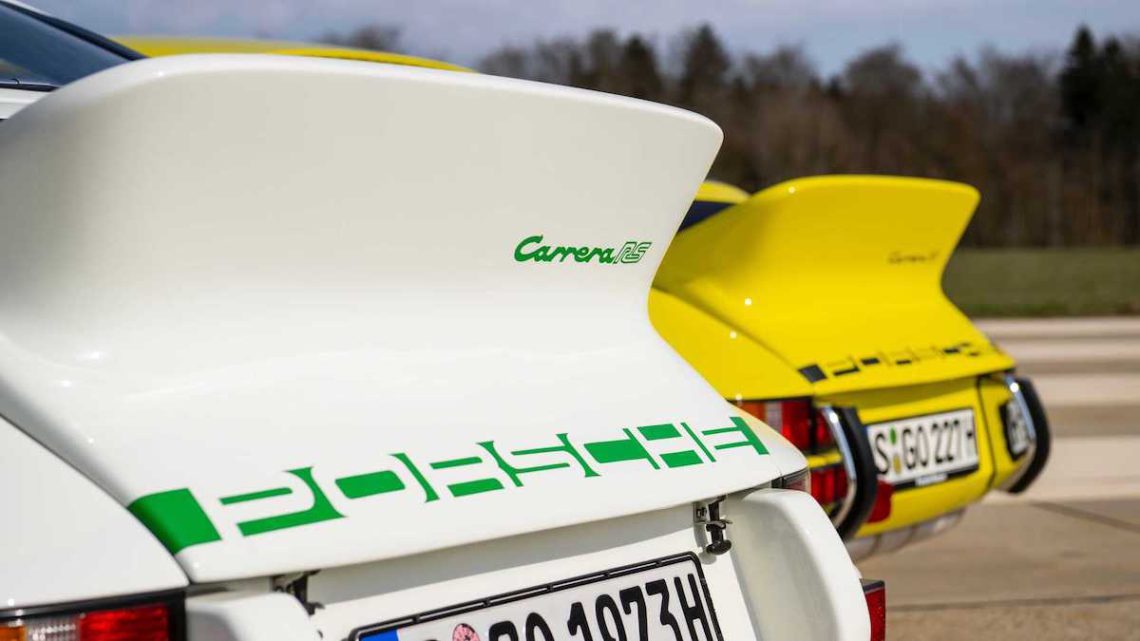
Cool colors
In addition to the aforementioned features, the Porsche 911 Carrera 2.7 RS of yesteryear had other notable design features: 29 paint colors were available, including such striking colors as Light Yellow, Red and Blood Orange. Porsche also fulfilled individual customer color wishes. The color of the center of the rims matched the body color; on the RSs in Grandprix white, the inscriptions on the flanks were red, blue or green. The legendary lettering is still available on the latest and fiercest RS models of the 911. Many a buyer chooses this historic nod to the original. And Porsche is doing its best to honor this. Just look at the capacity in which the all-new 911 GT3 RS has been presented – half a century after the fact.
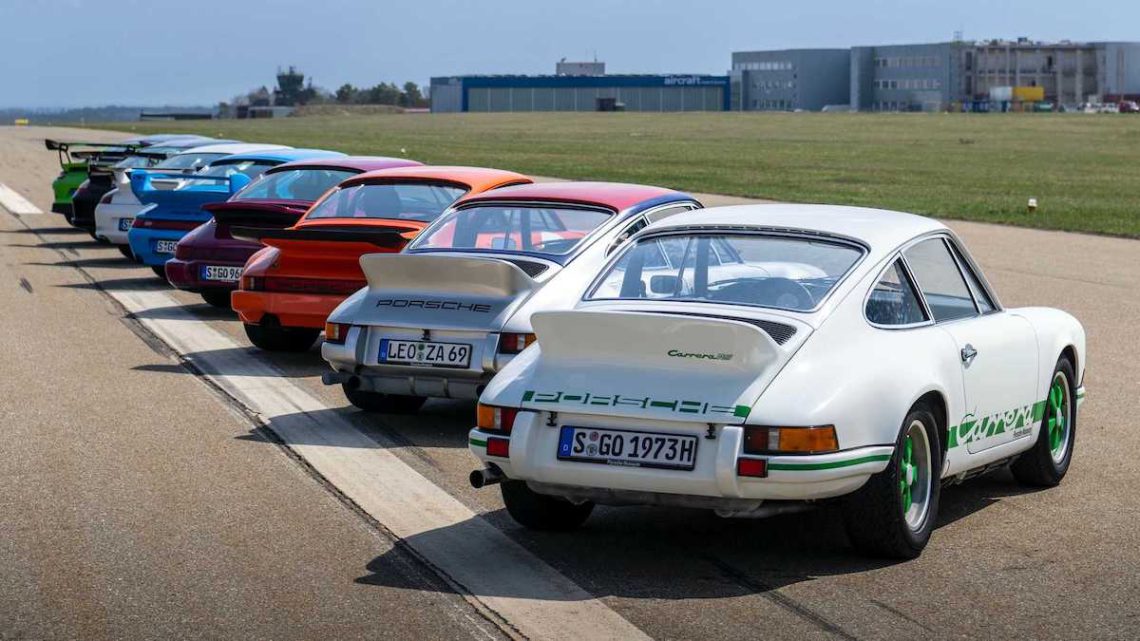
Legendary patron
The Porsche 911 RS, both the original and newer generations, has numerous racing successes. In fact, too many to mention. Almost as legendary as the 911 2.7 RS itself, are some of the flesh-and-blood people who ensured these successes. ‘Our’ Gijs van Lennep is one of them here, for example, who together with Herbert Müller won the 1973 Targa Florio. But if there is one person who is mentioned in the same breath as RS, it is Walter Röhrl. The rally legend – of almost mythical proportions – blew out his 75th candle this year and has been associated with the archetypal RS since its launch. To this day, Röhrl is considered a patron of the “Elfer among Elfers. Where there is a new generation of RS up and going, there is also Röhrl. Virtually every introduction of an RS model, he was guest and patron. Once again, during the celebration of its 50th anniversary, the towering German gets behind the wheel of the Porsche model that has made him equally immortal with just as much pleasure and inspiration. And don’t think he has lost the ability to steer….
Party at Porsche Museum
The Porsche Museum in Stuttgart-Zuffenhausen will open a special exhibition dedicated to the 50th anniversary of the iconic 911 Carrera RS 2.7 on Sept. 20. Come see that if you are Porsche lover.
